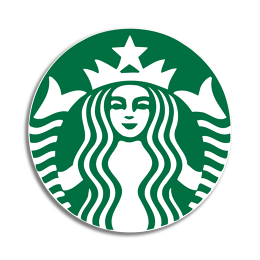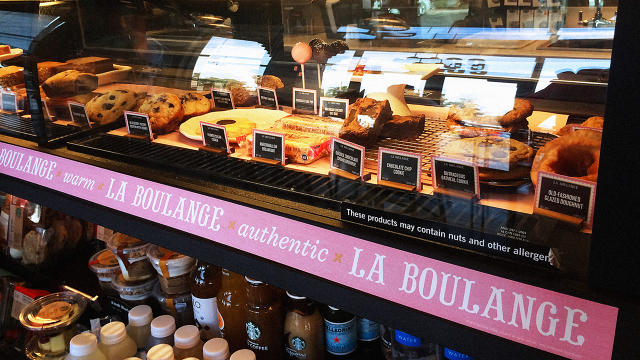What Apple And Starbucks Taught Me About building A brand
Alessandra Ghini shares insights from her work in advertising at Apple and Starbucks on the precipice of each company’s 2d golden age.
January 21, 2016
when we see an vigorous commercial from Apple that evokes our experience of journey, or change hellos with a Starbucks barista in a technique that seems like we’re speaking to a chum, we fall hook, line, and sinker for the logo. These moments are obviously constructed, however we do not register them as such.
which is as a result of they may be meticulously designed by way of the likes of Alessandra Ghini to feel seamless and pure. Ghini is a brand and marketing specialist who has had some fortuitous job timing. A 20-12 months industry veteran, she landed at Apple in 2000, right before the iPod took over the arena, then spent two years at Starbucks instantly following the return of CEO Howard Schultz. As she provides up the freelance life for a brand new place, as chief advertising officer with the techie tea startup Teforia, Ghini recounts her occupation, which includes two stories filled with classes for any person who works in branding. here she is in her personal words:

What I learned At Apple – A Product Is a story, no longer an inventory Of features
I used to be at Apple all over, what folks name pre-turnaround, 2000. that is before iPhone and that different side of Apple, so it’s a must to suppose in that attitude.
everyone idea I was once loopy. “You’re gonna go to Apple now that they’re on their last legs!” What I in point of fact realized there essentially the most as a marketer was the power of constraint and having actually tight almost guardrails that some folks would possibly feel had been claustrophobic. however the more constraints you put on folks, the extra unbelievable the breakthrough you can have, because you probably have so little to work with, it’s important to push yourself in new methods.
take into accounts the colour of Apple’s ads—white, silver, and black. inside those constraints, you must in point of fact push yourself to provide you with a compelling design.
From a advertising viewpoint, I specialized on the tool facet, and track. instrument was simply beginning. We hadn’t truly launched. Hardware was once all the time the exhibit of Apple. They’d taken on tool (like closing minimize professional, iTunes, and iPhoto) to show off the hardware. In software you were a lofty 2d. software is what no person needed to do. no one within Apple would have taken it.
The listing of no’s was once lengthy: No fliers. No brochures. No takeaways. This was when tool was nonetheless sold in a box! I was thinking, how am I going to market, and promote this thing with retail companions? however Steve [Jobs] wanted to get far from printed supplies. He said, “I don’t wish to make any longer paper because nobody’s going to learn it.”
So I worked lots harder to find wonderful designers the use of the software, and i invested in movies. ahead of YouTube was once standard, Apple created wonderful movies on the way to use last cut. All this sounds boring now, but at the time [it was radical]. the whole thing again then was once throughout the digital expertise. We worked onerous with the web as a result of these have been the constraints we got.
It grew to become out to be nice.
those outdated digital movies were laying the muse for what changed into very usual for training and telling a really perfect story in a digestible method, and now not cluttering that selling expertise.
We tried to get past features and advantages, as a result of you’ve got rather more limited time in a video. It’s straightforward to fall into features and tips, but Apple’s brand was in regards to the story. You at all times had to discover a story to inform and create a narrative that made that product interesting. And that was a actually fascinating change to me. At my final job, Macromedia, we had truly excessive-finish pro tools, and we have been at all times selling to the pro user, so we did a lot of technical marketing. however Apple knew, eventually, final minimize’s going for use for kids. So getting into that mindset early on—how you can inform a story, not in response to the technical small print, but on the outcome—was essential. Apple used to be always about what’s conceivable, what the creativeness can unlock. It was a super thing to analyze. We noticed it so much within the iLife. With iPhoto, we tapped into the emotional components of what photos mean.
Or with the iPod, we did the traditional product hero—the pretty shot—and the tagline “a thousand songs for your pocket.” It wasn’t tremendous a hit. in the event you needless to say, there used to be an incredible shift the place we stopped speaking about the iPod as a hardware manner, and started talking in regards to the emotionality that had started in these tool products. So we put the emotional spin on the iPod, and that’s the place you got the side of musical joy that might free up your internal self, the colourful silhouette.

What I learned At Starbucks – giant manufacturers Can Shift quick, If The leader Cedes energy
In the entire excellent things I learned at Apple in self-discipline and constraints, it was additionally an awfully tricky tradition in advertising. I don’t want to say it used to be cold per se, however culturally, everyone was once looking to vie for Steve’s attention.
With Starbucks, it was once initially going to be a six-week project to assist them replace their brand e book. that is proper after Howard Schulz got here back. He felt accountable [for the fall of the brand], and he didn’t feel he instilled the brand as a filter to Starbucks operations.

I went to Seattle, checked out model guide, and requested questions. I stated, “Your brand e book is kind of vital… you wish to have to do an replace, but what’s your greater intention?”
i believe my preliminary draft received introduced up to exec degree. Howard stated that is greater than an replace, this should be a tool for the company. I owe them this. The mission become a two-yr commitment of taking what used to be in his head, what he knew to be real about Starbucks, and turning it into a brand story all the company could analyze, bear in mind, and use as a filter.
It was once an incredible experience. The Starbucks tradition may be very completely different from Apple’s, particularly at that time. Howard is a really nurturing person. extremely excited about empowering his execs. I met with him a few times, every few months checking in. however as soon as he made key picks, he let his executive advertising crew enhance it. That level of empowerment used to be unbelievable to peer, especially at an organization that was once so large.
It was like, “Wow you don’t want to be a whole, utter dictator!” it’s worthwhile to say Starbucks used to be extra sloppy in its brand than Apple, and yes that’s genuine, however they’re passionate, and needed constraint.

We modified the logo. We did quite a few the emblem work internally ahead of we engaged with [the design agency] Lippincott because that they had a young design group inside of. incessantly, the younger design group does not get to do the fun stuff. They let their entire interior staff spend weeks doing explorations. And to be honest, two younger designers ended up with an emblem that’s virtually similar to what they have now. When the logo strategy was once achieved, Lippincott did the refinement, however the vast majority, real suggestion, got here from inside of.
We fascinated by the second of connection, whether it’s a barista realizing your identify, otherwise you having a quiet moment over espresso with a pal. every second had to be totally fleshed out. on this experience, most of my brand work was inner-going through, like our decision to separate the meals from the coffee.

the only likelihood for meals to fly used to be to pull it out into its own division rather than caught under espresso, to be multiplied to be as robust as beverage. [Ed word: Schultz notoriously complained of the food stink overpowering the coffee scent as diluting the Starbuck brand.] That used to be in 2007, after they in point of fact began pushing their meals choices. You don’t go to Starbucks to connect with somebody over a huge scone. as an alternative they developed smaller objects. power packs. Mini bites. Cake pops. All of that came out of that model work. Even getting La Boulange, even if that changed, was to bring up the food to be as sturdy as beverage.
right here was once an important group, however they have been so agile, so willing to pivot. The reorganization happened 30 days later, they began working for it. From that, I learned you in reality can transfer a huge group quick if the management is aligned. It doesn’t mean you’ll all the time get your finish result, but you can be a huge firm and be nimble. You don’t have to be a tank.
The interesting historical past of Apple in three Minutes
[App picture: Flickr consumer Shinji W]
(62)














